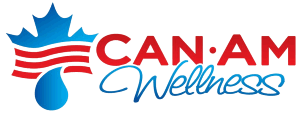September News on Air Polution
Laser Printers
Recently published in the American Chemical Society’s Journal Environmental Science and Technology Australian scientists reported that laser printers can generate the same amount of ultra-fine particles as tobacco smoke. Researchers found that some models of laser printers are sources of ultra-fine particles that contribute to indoor air pollution. Breathing tiny particles can cause respiratory irritation and more severe illnesses such as heart disease and cancer.
The study also found that during work hours printer use caused indoor air pollution to increase fivefold. And a workers exposure levels depends on the effec tiveness of the building’s ventilation system.
Cleaning Products & Disinfectants
Many toxic chemicals are found in janitorial cleaning supplies used in industrial and commercial facilities. They often emit volatile organic compounds (VOC’s), contribute to poor indoor air quality, and create access barriers for people with asthma, allergies, and/or chemical sensitivities. Even “greener cleaners” may contain volatile substances, like citrus or pine, that can cause adverse health effects in building occupants.
There is a wide range of cleaning and maintenance products that include, but are not limited to, air fresheners, deodorizers, bathroom and tile cleaners, dusting aids, engine and other degreasers, lubricants, fabric protectants, floor polishes and waxes, furniture polish, general purpose cleaners, glass cleaners, laundry products, oven cleaners, carpet and upholstery cleaners, graffiti remover, and floor strippers. One of the most hazardous cleaning operations for workers and building occupants is the stripping and refinishing of floors.
Dampness in Buildings & Health
The incidence of asthma and allergy has increased throughout the developed world over the past thirty. The short time interval over which this increase has occurred implies that the causes are changes in environmental exposures rather than genetic changes. Changes in indoor environments warrant special attention since indoor air constitutes a dominant exposure route. Increased exposures to allergens and/or adjuvants (enhancing factors) may each be partially responsible for the increase. In two multidisciplinary reviews on moisture related problems in buildings (dampness) and associated health effects it was concluded that “dampness” do increase the risk for several health effects such as asthma and other allergic symptoms, sick building syndrome and airway infections.
